Best Cat Litter For Kittens
This page contains affiliate links. We may earn money or products from the companies mentioned in this post through our independently chosen links, which earn us a commission.
Knowing what is best for your kitten is what makes you a great kitten parent or guardian. When introducing your kitten to their first litter boxes, it is important to find a product that is optimized for managing the distinctive challenges that kittens face.
Kittens start showing instinctive digging and covering behaviors when they’re as young as 3 or 4 weeks old. It’s not uncommon for kittens to take an experimental nibble at their new litter.
If you’re using the wrong litter, a little innocent curiosity could have serious health consequences.
Some Clumping clay litters, specifically, can cause gastrointestinal distress and even intestinal blockage.
For most kitten guardians, litter training isn’t an enormous problem. Selecting the right litter, however, can be more of a problem.
Compare Best Cat Litter For Kittens
|
Premium Choice
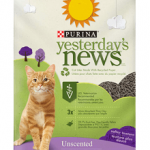
3. Yesterday's News Softer Texture Unscented Non-Clumping Paper Cat Litter |
Best For Older Kittens
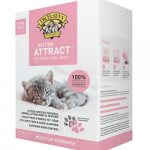
5. Dr. Elsey's Kitten Attract Clumping Clay Cat Litter |
Best Training Litter
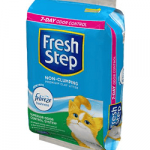
6. Fresh Step Febreze Scented Non-Clumping Clay Cat Litter |
|||
|
Material
Pine, Wood |
Material
Wood |
Material
Paper |
Material
Wallnut |
Material
Clay |
Material
Clay |
|
Type
Non-Clumping, Unscented |
Type
Clumping, Unscented |
Type
Non-Clumping, Unscented |
Type
Clumping |
Type
Unscented, Clumping |
Type
Non-Clumping |
|
Tracking
9.5/10 |
Tracking
9.5/10 |
Tracking
9.0/10 |
Tracking
9.0/10 |
Tracking
8.5/10 |
Tracking
8.5/10 |
|
Absorption
9.5/10 |
Absorption
9.5/10 |
Absorption
9.0/10 |
Absorption
9.0/10 |
Absorption
9.0/10 |
Absorption
8.5/10 |
|
Odor control
10/10 |
Odor control
9.5/10 |
Odor control
9.5/10 |
Odor control
8.5/10 |
Odor control
8.5/10 |
Odor control
8.5/10 |
While it is tough to easily come up with the best kitty litter, there are some approaches that might cause some issues as well.
Since the process of finding the right cat product might seem a bit unsettling, we have suggested some of the best cat litter products for kittens down below.
Feline Pine Original Non-Clumping Wood Cat Litter
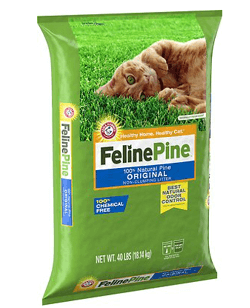
Product Info
- Material: Pine, Wood
- Type: Non-Clumping, Unscented
- Tracking: 9.5/10
- Absorption: 9.5/10
- Odor control: 10/10
- Eco-Friendly
- Dust free
- Free from chemicals, additives or synthetic fragrances
- It does not work great with all litter boxes.
This litter leaves no irritant when poured because it is natural, non-clumping and clay-free. Also its improved formula now absorbs liquids twice as fast as the old Feline Pine. Its proprietary formula contains hundred percent natural pine and eliminates even the toughest odors, leaving your environment smelling fresh.
Okocat Super Soft Clumping Wood Unscented Cat Litter
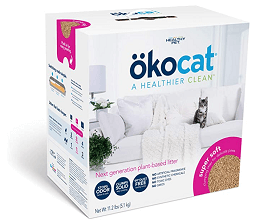
Product Info
- Material: Wood
- Type: Clumping, Unscented
- Tracking: 9.5/10
- Absorption: 9.5/10
- Odor control: 9.5/10
- Very gentle on kitten paws
- Soaks up moisture
- Clumps very well
- Easily hides cat odors
- Lightweight
- Relatively dusty
- Pretty expensive
Yesterday's News Softer Texture Unscented Non-Clumping Paper Cat Litter

Product Info
- Material: Paper
- Type: Non-Clumping, Unscented
- Tracking: 9.0/10
- Absorption: 9.0/10
- Odor control: 9.5/10
- Affordable
- Low tracking
- Excellent for allergies
- Great for sensitive paws
- Does not clump
- Requires constant cleanup
Naturally Fresh Unscented Clumping Walnut Cat Litter

Product Info
- Material: Wallnut
- Type: Clumping
- Tracking: 9.0/10
- Absorption: 9.0/10
- Odor control: 8.5/10
- Biodegradable
- Great odor neutralizer
- Absorbent
- No chemicals, clay, toxins or grain
- Low tracking
- Not 100% dust-proof
- Pricey
Dr. Elsey's Kitten Attract Clumping Clay Cat Litter
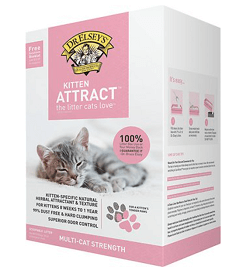
Product Info
- Material: Clay
- Type: Unscented, Clumping
- Tracking: 8.5/10
- Absorption: 9.0/10
- Odor control: 8.5/10
- Durable
- Locks away odor for several days
- All natural
- Softer texture
- Minor dust issue
- According to some customers, this brand does not have odor protection
- Some kittens are attracted to the herbal smell of the litter and either eat it or play in it
- Sticks to kitten’s privates, fur and feet like glue
Fresh Step Febreze Scented Non-Clumping Clay Cat Litter
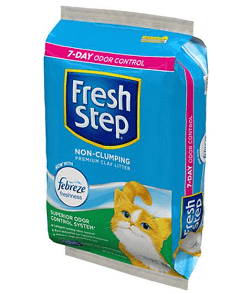
Product Info
- Material: Clay
- Type: Non-Clumping
- Tracking: 8.5/10
- Absorption: 8.5/10
- Odor control: 8.5/10
- Paw-activated fragrance keeps the litter box fresh
- Absorbs odor from urine and feces immediately on contact
- Antimicrobial agent inhibits bacteria and reduces odor
- Some cats dislike the fragrance or find it too strong
This kitty litter features activated carbon that traps and eliminates odors from both urine and feces on contact.
Plus, it contains a microbial agent to inhibit bacterial growth to further reduce litter box odor. This cat litter quickly absorbs liquid, and the fragrance is paw-activated, so the litter box stays fresh with every step.
Getting Your Kitty Litter
Training your kitty on how to use a litter box is very important. There are many challenges that need to be considered when looking for a kitty litter.
Kittens that have initial negative experiences with their litter box or litter fillers could pose a serious challenge to instill a proper litter box routine.
They have to be trained to like their litter boxes and litter to avoid defecating and urinating in places outside of the box or causing a huge mess in the box because they are uncomfortable with it.
- Introduce Litter at the Right Time
Newborn kittens need to be encouraged to go to the bathroom and won’t start using the litter box until around 3 weeks of age. Kittens develop at different paces, so a lot of patience and continuous encouragement will be needed by the third week to ensure that your kitten uses the litter box on a regular basis.
- Consider Your Kittens’ Underdeveloped Paws
Kittens can have sensitive and immature paws which can make walking on harder litter materials very uncomfortable. Some of such litter materials are found in most clay litter varieties and few natural products made of hardwood or corn. To this end, your priority should be to get a litter that is relatively soft to the touch, even if it comes at the cost of less optimal odor control.
- Consider Your Kitten’s Sense of Smell
Kittens have a keen sense of smell which is said to be about 14 times as strong as that of humans. Introducing your kitten to one of such repulsive and unfamiliar litters will only serve to dissuade them from using a litter box completely. It is best to use products that have natural subtle scents in their litter materials or no scents at all.
- Size of Granules
The size of your litter granules will either make it easy for your kittens to move or impede their movement. The larger the litter granules, the tougher it will be for your kittens to adequately move around. Those little paws are not meant to dig through boulders. To make sure kitty has a pleasant litter experience that is gentle on the paws, look for smaller size litter granules.
- Kittens Might Eat Anything
It’s not uncommon for kittens to take an experimental nibble at their new litter. Kittens are notorious for eating the kitten litter. They are still learning what is edible and is not edible so having a litter that does not pose a health risk to their digestive tract when they eat some should be considered.
- Choose Non-Clumping Litter for Younger Kittens
You can choose to use non-clumping clay for your kittens instead of the clumping clay litter. This type of litter is made from clays other than bentonite. It absorbs urine but doesn’t form clumps, so it’s easy to leave bits of moist litter behind when you scoop the box. It, however, gets smelly quick and requires more frequent changing than clumping clay.
- Choose a Litter that Helps with Training
If your kitten is having a little trouble learning to use the litter box, consider using a litter designed to help with training. Some litters are made specifically for litter box users-in-training and contain herbal attractants that encourage cats to use the litter box.
- Choose the Right Box and the Right Placement
Your litter box should be easy for your kittens to walk in and out of until they are big enough for a bigger box. After which you should make finding their litter box very easy. Ideally, a kitten learning to use a box should be restricted to one room so that they can easily find the litter box at all times.
- Keep it Clean
A clean and well-cared-for cat is a healthy and very happy cat. Keep the litter box clean, in order to encourage your kitten to continue forming good habits. A clean box is more agreeable for you and for them and will keep them coming back every time they need to use the bathroom.
Final Thoughts
Kittens are a bundle of delight, but like babies, they learn about their new environment by nibbling on things. Learning how to use the litter box is an important part of early feline development, and we have to train them to use it frequently. This should not be hard with the right encouragement.
Hygiene is a very important part of cat litter. Always wash your hands thoroughly after handling used cat litter, handle the litter in a ventilated area to avoid inhalation and keep contents and packaging out of reach of children and pets. Do not forget to consult a physician in case of accidental ingestion.
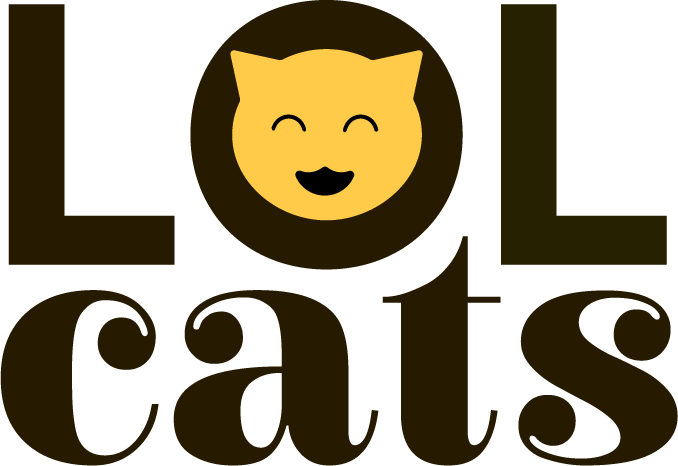
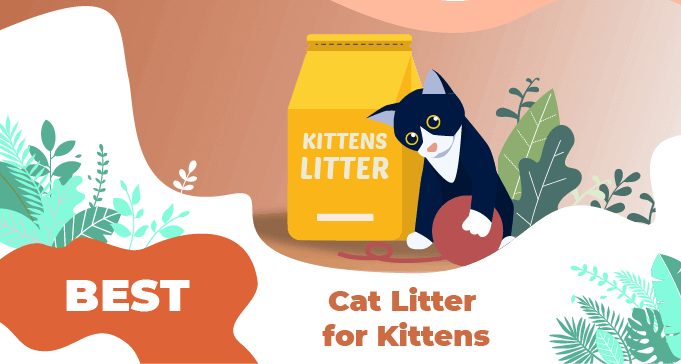

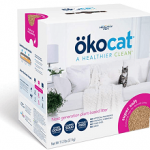
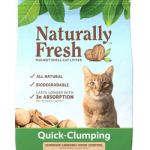
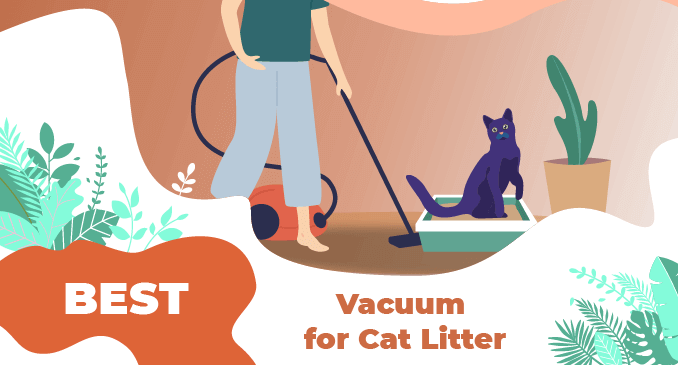
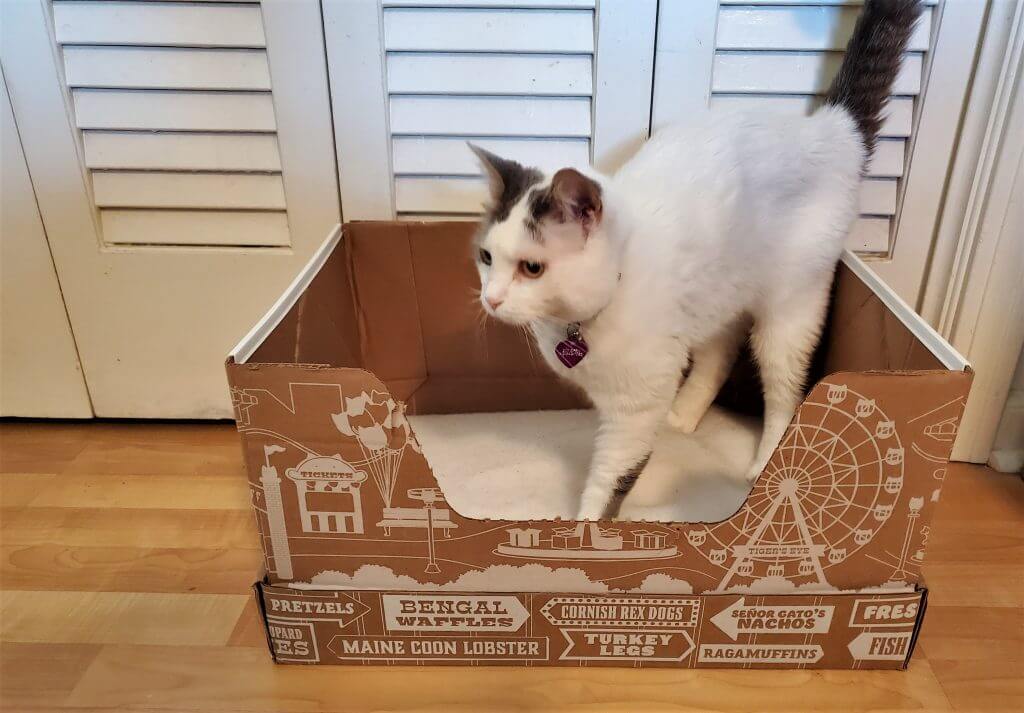
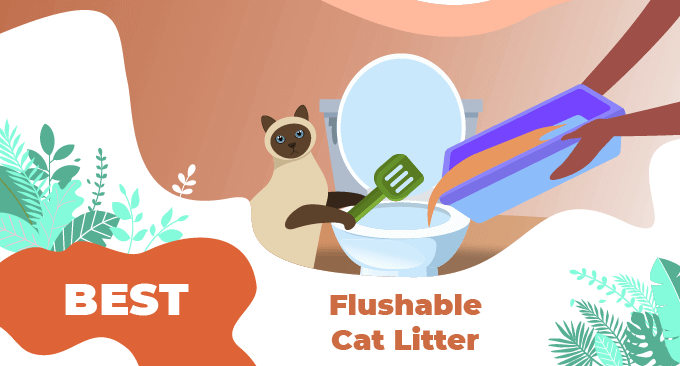
Joe
Fostering (and will probably fail) kittens right now and found Special Kitty at Wal-Mart. It's unscented, non-clumping clay litter. It's a bit small granules but perfect otherwise. Bonus: it's inexpensive! Special Kitty Fragrance Free Natural Clay Non-Clumping Cat Litter https://www.walmart.com/ip/seort/10293705